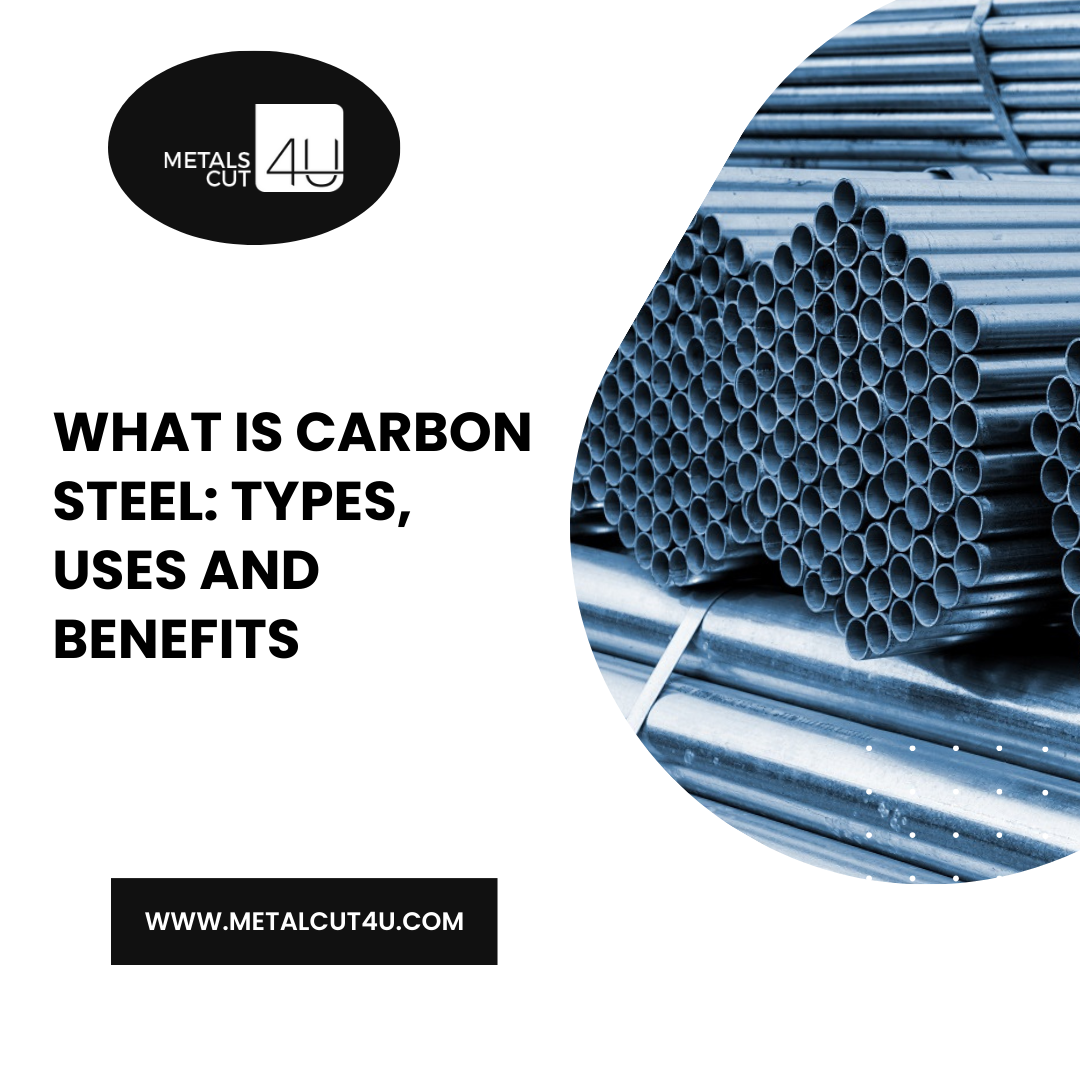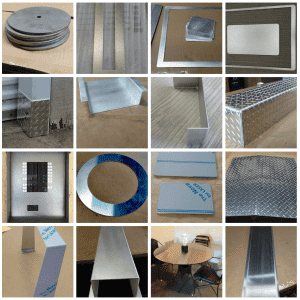What is Carbon Steel: Types, Uses, and Benefits

Uses of Carbon Steel
Walk around any city and you’ll find carbon steel hiding in plain sight. It’s in the bridges that hold traffic every day, the buildings we live and work in, and even in the simple tools we keep at home. Strong, reliable, and surprisingly versatile, carbon steel is one of those materials you don’t think about much but end up depending on constantly.
In this article, we’ll look at what carbon steel actually is, the types of carbon steel, how it’s used across industries, and the key benefits that make it such a popular choice.
What is Carbon Steel
Carbon steel is simply steel where the main alloying element is carbon. The amount of carbon in the alloy is usually very small, ranging from less than one percent to slightly over two percent. That might sound small, but even slight differences in carbon percentage can change the behavior of the steel dramatically. Lower carbon levels keep steel softer and more flexible, while higher levels increase hardness but can also cause brittleness.
Unlike stainless steel, carbon steel doesn’t usually contain large amounts of chromium or nickel. That means it won’t resist rust in the same way, but it’s also easier to work with in some cases, and significantly more affordable. It has become a go-to choice whenever cost and strength matter more than aesthetics or corrosion resistance.
Types of Carbon Steel
Carbon steel belongs to one of the broader types of steel that are defined by their carbon content, and within this category, we find several variations. The way carbon content shifts divides this material into different categories. Each has its own characteristics, trade-offs, and ideal uses.
Low Carbon Steel
Low Carbon Steel, also known as mild steel, contains less than 0.3% carbon. It’s soft, ductile, and easy to weld. Think of it as everyday steel, which you’ll see in wire, sheet metal, and structural shapes. One example of low-carbon steel would be the steel used in car body panels or household appliances.
The advantages of low-carbon steel are clear: it’s inexpensive, easy to form, and widely available. However, it lacks the high strength of other categories and can wear out faster under stress. Even so, there are countless applications for low-carbon steel, from furniture frames to pipelines. The application of mild steel is particularly common in construction, where large amounts of affordable steel are required.
Medium Carbon Steel
The carbon level in medium carbon steel is usually in the range of 0.3% to 0.6%. It strikes a balance, stronger than mild steel but still workable. One example of medium carbon steel is the material used in gears, axles, or railway tracks. It offers more strength than low-carbon steel, but shaping and welding it becomes a bit harder.
High Carbon Steel
Here, carbon ranges from 0.6% to 1%. High carbon steel is known for its hardness and ability to hold a sharp edge. That’s why it’s used in cutting tools, springs, and knives. Some examples of high-carbon steels are found in products such as masonry tools and durable wire materials. The advantages of high carbon steel include excellent wear resistance and toughness, though it can be brittle if not treated correctly.
Ultra-High Carbon Steel
Containing 1% to 2% carbon, this is the strongest but also the most brittle type. In the past, ultra-high carbon steel was commonly used for blades, from everyday knives to swords and similar sharp instruments. Nowadays, it has more specialized uses in industries where hardness is critical.
Uses of Carbon Steel
The Uses of Carbon Steel are almost endless, but some categories stand out:
Construction and Infrastructure
Walk past any construction site and you’re looking at carbon steel in action. Construction sites rely heavily on carbon steel for structural frameworks and reinforcements. Its combination of strength and affordability makes it essential for building bridges, tunnels, and skyscrapers. The application of carbon steel in construction is so common that it’s almost impossible to imagine modern cities without it.
Manufacturing of Machinery and Tools
Industrial machines, precision parts, and many types of cutting equipment often rely on carbon steel as a primary material. High carbon steel especially shines here because of its ability to stay sharp and resist wear. Bolts, gears, drills, and even hand tools often rely on this material.
Automotive and Transportation
Cars, trucks, railways, and nearly every form of transportation depend on carbon steel. Body panels use mild steel for formability, while engine parts and axles may call for medium or high carbon steel. Even rails themselves are an example of medium carbon steel in practice. The uses of carbon steel in this sector are both visible and hidden, spanning everything from safety-critical parts to the basic structure.
Household and Everyday Applications
Many everyday objects, such as kitchen knives, yard tools, and small fasteners like nails or screws in furniture, are made from carbon steel. These examples show how practical and versatile carbon steel can be.
Oil and Gas Industry
Benefits of Using Carbon Steel
Why is carbon steel chosen so often, even when there are so many other metals available? Its widespread use is driven by several practical advantages.
Strength and Durability
When treated properly, carbon steel can last decades. It holds up under stress, resists deformation, and in higher carbon forms, maintains hardness. For load-bearing structures or tools that take repeated impact, this reliability is an obvious advantage of carbon steel.
Affordability
When set side by side with stainless steel or more complex alloys, carbon steel is usually the more budget-friendly option. That’s why it’s the first choice for large-scale applications like bridges, pipelines, and automobiles. The cost-to-performance ratio is hard to beat.
Versatility
Few materials adapt as well as carbon steel. From sheet metal to large beams, from cookware to railway tracks, its range of applications is massive. That flexibility itself is another advantage of carbon steel.
Recyclability
Around the globe, carbon steel ranks among the most frequently recycled metals, giving it strong sustainability value. Old beams, cars, or machinery can be melted down and reshaped without losing much performance. This makes it both sustainable and economical.
Heat Resistance
One notable property of high-carbon steels is their ability to tolerate high temperatures without losing performance. That’s part of why they’re used in cutting tools, furnaces, or environments where elevated temperatures are common. This is one of the less obvious but still important advantages of high carbon steel.
Good Thermal and Electrical Conductivity
Although not as conductive as copper or aluminum, carbon steel still performs reasonably well. In some industrial applications, this property adds to its usefulness.
Final Words on Carbon Steel
Carbon steel may not always look glamorous, but it’s hard to imagine modern life without it. From massive bridges to the knife in your kitchen drawer, it appears in ways both obvious and subtle. Different types of carbon steel serve their role, whether it’s the flexibility of mild steel or the toughness of high carbon steel.
When you step back, the real strength of carbon steel is in its balance: affordable, strong, adaptable, and reliable. That combination explains why it remains one of the most widely used materials across industries.
FAQs About Uses of Carbon Steel
1. What industries use carbon steel the most?
Construction, automotive, manufacturing, and oil and gas are among the biggest users.
2. Is carbon steel safe for cooking applications?
Yes, especially in cookware like pans. It remains safe to use as long as the surface is seasoned correctly and cared for over time.
3. How does carbon steel compare to stainless steel in terms of durability?
It’s a strong material, but its weakness is that it can corrode more easily. Stainless steel lasts longer in wet or humid environments.
4. Can carbon steel be used in outdoor environments?
Yes, but it often needs a protective coating or routine care to keep rust away.
5. What are the main advantages of carbon steel over other metals?
Affordability, strength, and versatility.
6. Does carbon steel require special maintenance?
It can. To prevent rust, coatings, paints, or regular oiling may be necessary.
7. Why is carbon steel preferred in construction?
Because it offers an excellent balance between cost and structural strength.
